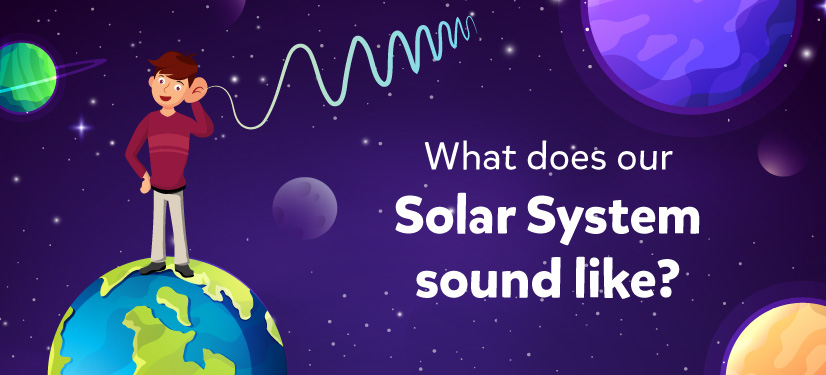
You may have seen images of various objects in space – planets, black holes, nebulae and the like. Whether it’s from your science lessons or sci-fi movies or other captivating videos available on the internet, all your knowledge of space has been through visual elements.
In short, you have not heard any sounds from space so far. But what if you could hear space? That would add a whole new dimension to learning about space, wouldn’t it? You may have imagined outer space to be mostly quiet. That’s because data collected by telescopes is mostly charts, plots, and images or silent videos.
However, scientists and experts from NASA wanted to understand how space sounds as well. They embarked on a ‘sonification project,’ which transforms inaudible data from telescopes into sound. This effort makes it possible to experience space data in a different perspective through hearing as well.
We are sure you would be curious to know how space sounds! Will we hear a ‘whoosh’? Will it seem like jazz music? Here is how the process works.
Before you understand how the sonification process works, you must understand why we are not normally able to hear space.

Converting data from space to sound is sonification
In physics, you may have studied that for sound to travel from one point to another, there needs to be a medium – like air or water. When sound is generated by an object ( here, a planet or a black hole), the sound passes through air when the particles vibrate and it reaches our ear-drum.
Since space is filled with vacuum, it is impossible for sound waves to pass through and reach us. However, with sonification, the data in the form of graphs and images is transformed to sound. NASA has embarked on the sonification process of data produced from various celestial bodies to understand them better.
NASA has been working in a dedicated observatory called the Chandra X-ray observatory that has been collecting data from various celestial bodies and converting it to sound. For instance, they have worked with nebulae, stars and galaxy clusters to decode their sound.

Listening to jazz from the outerspace would be cool, wouldn’t it?
The sonification team worked with scientists and students who are blind or have low vision to share this information in a new digital way. In their attempt, NASA sonified the data from several heavenly bodies. Some of them had interesting sounds captured by the telescope. Among them are the Perseus Galaxy cluster, the Crab Nebula and Ex Hydrae, a binary combination of a white dwarf star and a normal star.
So, in one of their attempts to interpret the behaviour of the Perseus Galaxy Cluster, which is 250 million lightyears away from the earth, NASA found a singing star! Well, at least that’s what they named it!
But the frequency of the song is a LOT deeper than the limits of human hearing. The estimate is that it is over a million times deeper than what we can hear. For you music buffs, the sound is at B flat, 57 octaves below middle-C. To arrive at this conclusion, Chandra observed the galaxy for a total of 53 hours.
Another interesting observation came in from Ex Hydrae -the twin star combination. Here, the experts listened to harmonies in 70 different styles! The resultant sound seemed like blues and jazz ballads. There were nine songs in total. Sounds fascinating, right?
Meanwhile, the Crab Nebula presented a pulsar clock-like sound as observed by the X-rays from the Chandra Observatory.
NASA says that the Chandra X-ray Observatory, which was launched by Space Shuttle Columbia in 1999, can better define the hot, turbulent regions of space. With an added layer to the observations through sound, it gives increased clarity to their observations and deductions in the future. Through this, the space research organisation believes that scientists can answer fundamental questions about the origin, evolution, and destiny of the universe better.
Now that you have a sneak-peek into the sonification of space, think about all the movies you have seen that are set in space. What sounds did you observe in the film? Do you think the sounds were realistic? . Share your thoughts with us in the comments below.
Liked this? Read similar blogs
Why do stars twinkle but planets don’t?
Aparna is a mom, singer and dreamer. At BYJU'S, she writes stories about learning for children. She believes in the power of music, especially ghazal, the magic of the universe and happy learners. When not writing or singing, you will find her intensely engaged in conversations about life and the power of words.